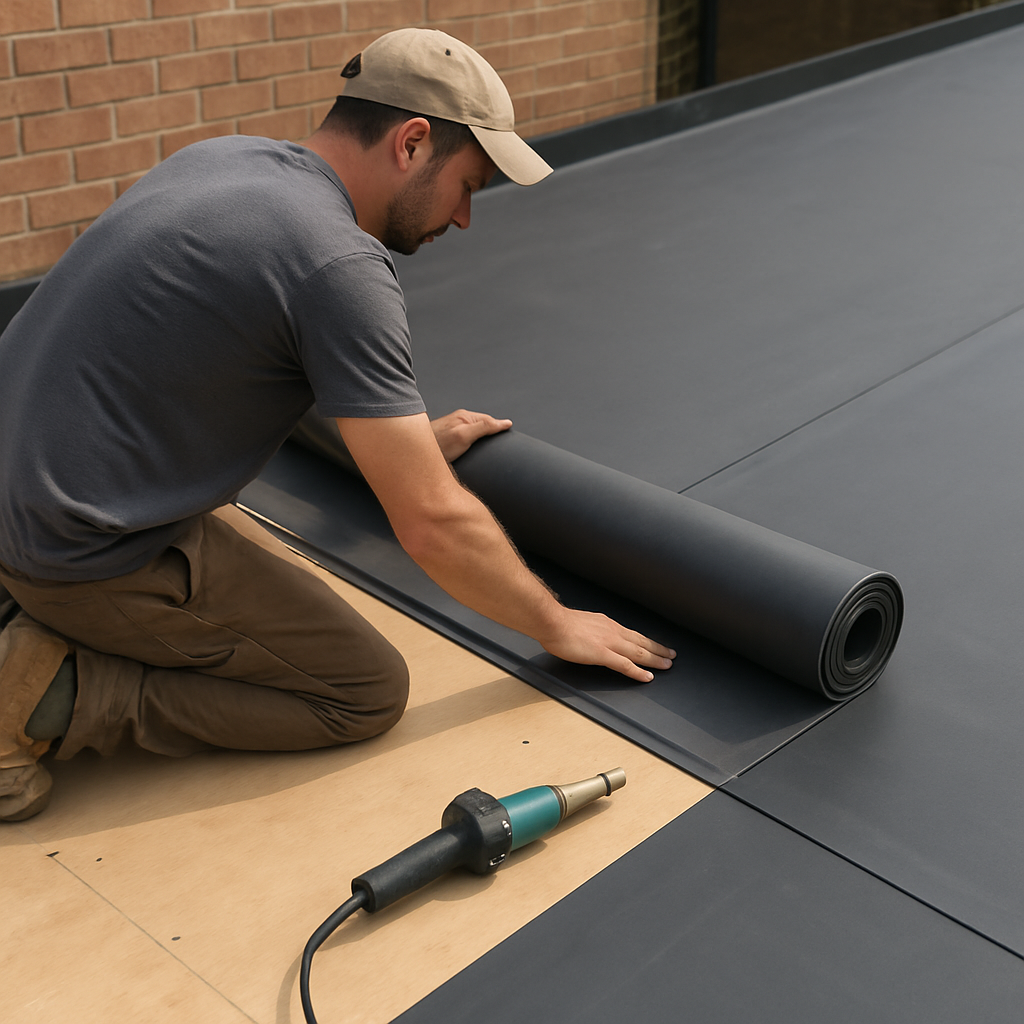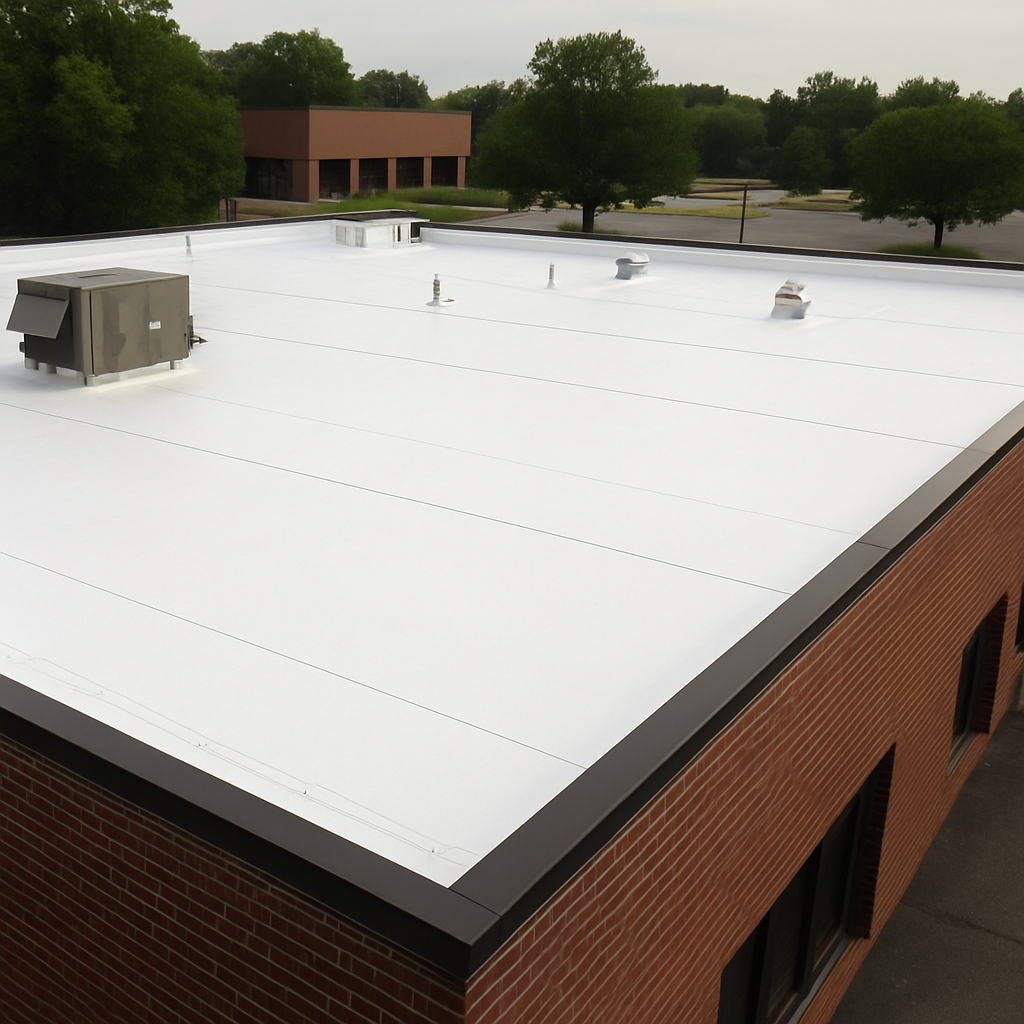When it comes to selecting the best roofing material for a flat roof, understanding the options is essential. Flat roofs, commonly found on modern homes and commercial buildings, require specific materials that ensure durability, cost-effectiveness, and performance. In this article, we’ll dive into the top five flat roof materials, helping you make an informed decision for your residential flat roof system.
EPDM, or Ethylene Propylene Diene Monomer, is a popular choice for flat roofing systems. This synthetic rubber membrane is renowned for its durability and flexibility. Let’s explore why EPDM might be the best roofing material for your flat roof.
Benefits of EPDM
- Durability: EPDM can last up to 50 years with proper maintenance, making it a long-lasting option.
- Weather Resistance: It withstands extreme weather conditions, including UV radiation, ozone, and high winds.
- Ease of Installation: EPDM is relatively easy to install, which can reduce labor costs.
- Cost-Effective: Compared to other roofing materials, EPDM is generally more affordable.
Considerations
- Appearance: While effective, EPDM’s appearance may not suit all aesthetic preferences.
- Seam Vulnerability: If not properly sealed, seams can become vulnerable to leaks.
2. TPO Roofing
Thermoplastic Olefin (TPO) is another excellent option for flat roofs. Known for its energy efficiency and durability, TPO is often used in both residential and commercial settings.
Benefits of TPO
- Energy Efficiency: TPO’s reflective surface helps reduce energy costs by reflecting heat away from the building.
- Durability: Resistant to mold, punctures, and tears, TPO is a sturdy choice.
- Eco-Friendly: TPO is recyclable, making it an environmentally conscious option.
Considerations
- Installation Complexity: Proper installation is crucial, which may require professional help.
- Limited Color Options: TPO is mostly available in white, which may limit design choices.
3. PVC Roofing
by Peter Muscutt (https://unsplash.com/@peterm4988372)
Polyvinyl Chloride (PVC) roofing is a high-performing option known for its strength and longevity. It’s especially popular for flat roofs requiring chemical resistance.
Benefits of PVC
- Chemical Resistance: PVC is highly resistant to chemicals, making it ideal for roofs exposed to grease or oil.
- Durability: Offers a lifespan of 20 to 30 years with proper maintenance.
- Fire Resistance: PVC is inherently fire-resistant, providing added safety.
Considerations
- Cost: PVC can be more expensive than other flat roofing materials.
- Environmental Concerns: The production of PVC involves chemicals that may raise environmental concerns.
4. Modified Bitumen
Modified bitumen is a traditional flat roofing material that combines asphalt with modifiers for enhanced performance. It’s a proven choice for residential flat roof systems.
Benefits of Modified Bitumen
- Proven Performance: With a track record of reliability, it’s a trusted option for flat roofs.
- Ease of Repair: Repairs are straightforward and can extend the roof’s lifespan.
- Cost: Offers a balance between cost and performance.
Considerations
- Installation: May require professional installation to ensure proper application.
- Weight: Modified bitumen can be heavier than other materials, potentially requiring structural reinforcement.
5. Built-Up Roofing (BUR)
Built-up roofing, commonly known as BUR, is a classic flat roof option. It consists of multiple layers of bitumen and reinforcing fabrics, creating a durable and waterproof membrane.
Benefits of BUR
- Durability: With multiple layers, BUR provides excellent protection against the elements.
- Waterproofing: The layered approach ensures superior waterproofing capabilities.
- Cost-Effective: Offers a good balance of cost and durability.
Considerations
- Installation Time: BUR can be time-consuming to install, potentially increasing labor costs.
- Maintenance: Regular maintenance is required to ensure longevity.
Making the Right Choice for Your Flat Roof
Choosing the best flat roof material involves considering factors like climate, budget, and building use. Here’s a quick guide to help you decide:
- For Durability: EPDM and PVC are excellent choices due to their long lifespan.
- For Energy Efficiency: TPO stands out with its reflective properties.
- For Traditional Reliability: Modified bitumen and BUR offer proven performance.
Conclusion
Selecting the right material for your flat roof is crucial to ensuring its longevity and performance. By understanding the benefits and considerations of each option, you can make an informed decision that suits your needs and budget. Whether you’re considering EPDM, TPO, PVC, modified bitumen, or BUR, each material offers unique advantages that can enhance the quality and durability of your flat roofing system. Make sure to consult with a roofing professional to ensure the best outcome for your specific project needs.
Remember, a well-chosen flat roof material not only protects your property but also contributes to energy efficiency and overall aesthetic appeal. Choose wisely, and your investment will pay off in the long run.



